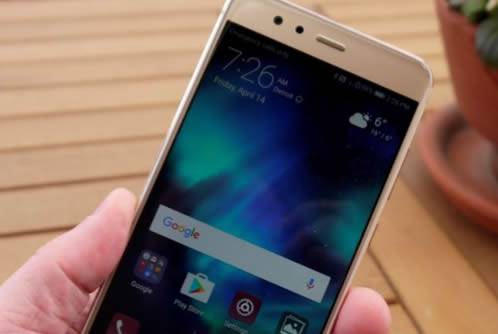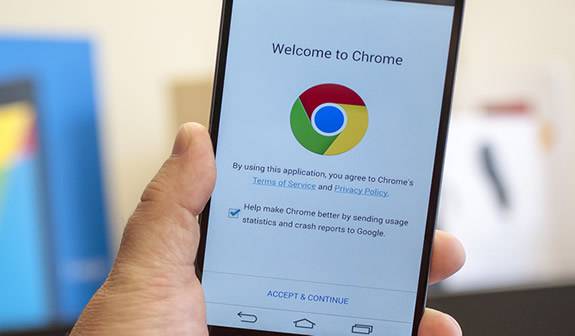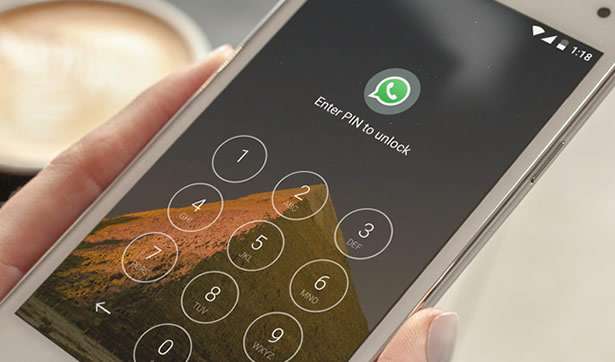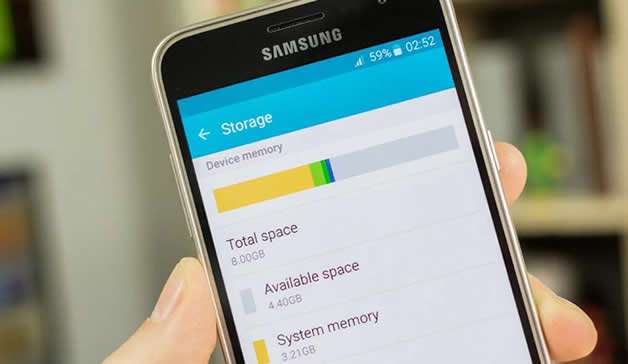It is possible that pictures sent from an iPhone to an Android device become blurry due to the difference in image resolution between the two devices. The best way to ensure that your images stay sharp and clear when sending them from one device to another is by using a file-sharing app, such as Google Drive or Dropbox, which will maintain the original image resolution of the photo. Here are some steps you can take:
1. On your iPhone, open the Photos app and select the photos you’d like to send.
2. Tap on “Share” at bottom left corner of screen and then select ‘Save To Files’ option.
3. Choose ‘On My iPhone’ (or other compatible cloud storage service) as destination folder for saving files into it and tap Save button at top right corner of screen .
4. Open up either Dropbox or Google Drive on both devices, upload/download each photo separately from one device to another and save it back onto their respective phones/tablets after completion of transfer process.(You may need separate accounts for both services).
5. Finally open up these same photos on both devices – they should now appear sharper than before!
How to send photos from an iPhone to an Android that are not blurry?
How do I get high-quality pictures from iPhone to Android?
It is possible to transfer high-quality photos and videos from an iPhone to an Android device. The easiest way to do this is by using a cloud storage service such as Google Drive or Dropbox. You can use the iCloud Drive app on your iPhone to upload all of your photos and videos, then download them onto your Android device. Additionally, you can connect both devices via USB cable and copy files directly between them.
How do you fix blurry pictures sent to me on Android?
There are a few different methods you can use to fix blurry pictures sent to you on an Android device. Depending on your desired outcome, one method may be more suitable than another. To help determine the best approach for your needs, here is a rundown of some potential solutions:
1. Try adjusting the image settings in your phone’s gallery app. Many phones have options to adjust the size and quality of images when viewed in the gallery or other photo viewing apps. If available, try tweaking these settings to see if it improves the clarity of any given photos within those apps.
2. Use image editing software such as Adobe Photoshop Express or Snapseed to edit and enhance blurry images directly from your device or desktop computer. These programs allow users to make numerous adjustments including sharpening, color correction and cropping that may improve overall image quality without losing too much detail from their original form.
3. If possible, contact the sender and ask them for a higher-resolution version of any photos they send over since this will usually result in much better picture quality than what was originally sent through text message or email (assuming they still have access).
Ultimately, there is no surefire way to completely fix every blurry photo but by utilizing some combination of these techniques you should be able to maximize image clarity as much as possible with minimal effort!
How do I send iPhone pictures without losing quality?
The best way to send iPhone pictures without losing quality is to use the iCloud Photo Library feature. This will allow you to store your photos in the cloud and access them from any device with an internet connection. To set up iCloud Photo Library, open Settings on your iPhone, select your name at the top of the page, then tap “iCloud” and select “Photos”. Make sure that iCloud Photo Library is enabled.
Once it’s enabled, all new photos taken on your phone will automatically be stored in the cloud (at their full resolution). You can share these images by sending a link or inviting someone to view a shared album. This ensures that no matter how many times they are shared or downloaded, they retain their original quality.
How do I fix blurry pictures sent to me from my iPhone?
Depending on the cause of the blurriness, there are a few potential solutions you can try to fix blurry pictures sent from your iPhone. Here are some steps you can take:
1. Check Your Network Connection: Blurry photos may be caused by an unstable network connection while sending or receiving them. Make sure that you have a strong connection before trying any other fixes.
2. Use an Image Editing App: If the photo is still blurry after checking your network connection, consider using an image editing app like Adobe Photoshop Express or Snapseed to sharpen and enhance it manually. These apps will allow you to adjust various settings such as contrast, saturation, and sharpness until you achieve the desired effect.
3. Re-Send The Photo: It’s possible that something went wrong during the transmission of the photo which could have resulted in it becoming blurry when received on your end. Try re-sending it again and see if this resolves the issue for you!
How do I send pictures without losing quality?
It is possible to send pictures without losing quality, as long as you take some key steps. Here are some tips for sending photos that will remain sharp and clear:
1. Choose the right file format – JPEGs are the best choice for digital images because they’re small in size while still retaining good image quality.
2. Compress your files – If you need to reduce the file size of a photo before sending it, use an online tool or program like Photoshop to compress the image without compromising its resolution and clarity.
3. Check your internet connection speed – A slow connection can cause data loss which can affect picture quality when sent over email or other online services, so make sure you have a fast enough connection before transmitting any photos.
4. Utilize cloud-based storage services – Services such as Dropbox allow users to store large files securely in the cloud with no data loss or degradation of image quality during transfer from one device to another. This ensures that all images remain intact regardless of how many times they are shared or moved between devices/computers/etc..
Why can’t I send pictures to non iPhone users?
Sending pictures to non-iPhone users can be difficult because of the different operating systems used between iPhones and other devices. However, there are a few steps you can take to make it easier. First, determine the type of device (Android or another brand) that your recipient is using. Then use one of the following methods to send pictures:
1. Email: Most phones allow you to attach photos from your library when sending an email. You may need to resize images so they’re not too large for some email programs.
2. Messaging Apps: If both parties have a compatible messaging app installed on their phones then this is usually the best way as it’s quick and easy with no file size restrictions like emails typically have.
3. File Transfer Services: There are many apps available that allow you to easily share files between two devices over Wi-Fi or Bluetooth connections such as Dropbox and WeTransfer which will work regardless of what type of phone each person has as long as they have access to download them on their device before trying to open them up..
How do you fix a blurry picture sent to you?
Fixing a blurry picture sent to you can be done with photo editing software. Depending on the severity of the blurriness, there are several techniques that can help improve the image. Here are some methods for fixing a blurry picture:
1. Use Sharpening Tools: Many photo-editing programs have sharpening tools available which allow you to sharpen an image and make it appear less blurry. Typically, this is done by increasing the contrast between light and dark areas of the image or by using edge-detection algorithms to enhance details in the photograph.
2. Increase Image Resolution: If possible, try to increase your picture’s resolution before attempting any other fixes; this may bring more detail out of your original image and reduce its blurriness when viewed at larger sizes.
3. Restore Details With Blur Reduction Tools: Some photo-editing programs have built-in tools specifically designed for reducing blurring caused by camera shake or low lighting conditions during shooting; these will create additional data points based on existing ones in order to restore lost details from blurred images while preserving their quality as much as possible.
4. Try Manual Retouching Techniques: For more severe cases of blurring, manual retouching techniques such as cloning (whereby parts of an image are copied onto another area) or frequency separation (which separates high frequency content from low frequency content) might be necessary in order to produce satisfactory results without compromising overall quality too much—this should only be attempted if you possess advanced knowledge of digital imaging principles though!
{“@context”:”https://schema.org”,”@type”:”FAQPage”,”mainEntity”:[{“@type”:”Question”,”name”:”How do I get high-quality pictures from iPhone to Android?”,”acceptedAnswer”:{“@type”:”Answer”,”text”:”nnIt is possible to transfer high-quality photos and videos from an iPhone to an Android device. The easiest way to do this is by using a cloud storage service such as Google Drive or Dropbox. You can use the iCloud Drive app on your iPhone to upload all of your photos and videos, then download them onto your Android device. Additionally, you can connect both devices via USB cable and copy files directly between them.”}},{“@type”:”Question”,”name”:”How do you fix blurry pictures sent to me on Android?”,”acceptedAnswer”:{“@type”:”Answer”,”text”:”nnThere are a few different methods you can use to fix blurry pictures sent to you on an Android device. Depending on your desired outcome, one method may be more suitable than another. To help determine the best approach for your needs, here is a rundown of some potential solutions: nn1. Try adjusting the image settings in your phoneu2019s gallery app. Many phones have options to adjust the size and quality of images when viewed in the gallery or other photo viewing apps. If available, try tweaking these settings to see if it improves the clarity of any given photos within those apps. nn2. Use image editing software such as Adobe Photoshop Express or Snapseed to edit and enhance blurry images directly from your device or desktop computer. These programs allow users to make numerous adjustments including sharpening, color correction and cropping that may improve overall image quality without losing too much detail from their original form. nn3. If possible, contact the sender and ask them for a higher-resolution version of any photos they send over since this will usually result in much better picture quality than what was originally sent through text message or email (assuming they still have access). nn Ultimately, there is no surefire way to completely fix every blurry photo but by utilizing some combination of these techniques you should be able to maximize image clarity as much as possible with minimal effort!”}},{“@type”:”Question”,”name”:”How do I send iPhone pictures without losing quality?”,”acceptedAnswer”:{“@type”:”Answer”,”text”:”nnThe best way to send iPhone pictures without losing quality is to use the iCloud Photo Library feature. This will allow you to store your photos in the cloud and access them from any device with an internet connection. To set up iCloud Photo Library, open Settings on your iPhone, select your name at the top of the page, then tap “iCloud” and select “Photos”. Make sure that iCloud Photo Library is enabled. nOnce it’s enabled, all new photos taken on your phone will automatically be stored in the cloud (at their full resolution). You can share these images by sending a link or inviting someone to view a shared album. This ensures that no matter how many times they are shared or downloaded, they retain their original quality.”}},{“@type”:”Question”,”name”:”How do I fix blurry pictures sent to me from my iPhone?”,”acceptedAnswer”:{“@type”:”Answer”,”text”:” nnDepending on the cause of the blurriness, there are a few potential solutions you can try to fix blurry pictures sent from your iPhone. Here are some steps you can take: nn1. Check Your Network Connection: Blurry photos may be caused by an unstable network connection while sending or receiving them. Make sure that you have a strong connection before trying any other fixes. nn2. Use an Image Editing App: If the photo is still blurry after checking your network connection, consider using an image editing app like Adobe Photoshop Express or Snapseed to sharpen and enhance it manually. These apps will allow you to adjust various settings such as contrast, saturation, and sharpness until you achieve the desired effect. nn3. Re-Send The Photo: Itu2019s possible that something went wrong during the transmission of the photo which could have resulted in it becoming blurry when received on your end. Try re-sending it again and see if this resolves the issue for you! “}},{“@type”:”Question”,”name”:”How do I send pictures without losing quality?”,”acceptedAnswer”:{“@type”:”Answer”,”text”:”nnIt is possible to send pictures without losing quality, as long as you take some key steps. Here are some tips for sending photos that will remain sharp and clear: n1. Choose the right file format u2013 JPEGs are the best choice for digital images because theyu2019re small in size while still retaining good image quality. n2. Compress your files u2013 If you need to reduce the file size of a photo before sending it, use an online tool or program like Photoshop to compress the image without compromising its resolution and clarity. n3. Check your internet connection speed u2013 A slow connection can cause data loss which can affect picture quality when sent over email or other online services, so make sure you have a fast enough connection before transmitting any photos. n4. Utilize cloud-based storage services u2013 Services such as Dropbox allow users to store large files securely in the cloud with no data loss or degradation of image quality during transfer from one device to another. This ensures that all images remain intact regardless of how many times they are shared or moved between devices/computers/etc..”}},{“@type”:”Question”,”name”:”Why can’t I send pictures to non iPhone users?”,”acceptedAnswer”:{“@type”:”Answer”,”text”:”nnSending pictures to non-iPhone users can be difficult because of the different operating systems used between iPhones and other devices. However, there are a few steps you can take to make it easier. First, determine the type of device (Android or another brand) that your recipient is using. Then use one of the following methods to send pictures: n1. Email: Most phones allow you to attach photos from your library when sending an email. You may need to resize images so they’re not too large for some email programs. n2. Messaging Apps: If both parties have a compatible messaging app installed on their phones then this is usually the best way as it’s quick and easy with no file size restrictions like emails typically have. n3. File Transfer Services: There are many apps available that allow you to easily share files between two devices over Wi-Fi or Bluetooth connections such as Dropbox and WeTransfer which will work regardless of what type of phone each person has as long as they have access to download them on their device before trying to open them up..”}},{“@type”:”Question”,”name”:”How do you fix a blurry picture sent to you?”,”acceptedAnswer”:{“@type”:”Answer”,”text”:”nnFixing a blurry picture sent to you can be done with photo editing software. Depending on the severity of the blurriness, there are several techniques that can help improve the image. Here are some methods for fixing a blurry picture: nn1. Use Sharpening Tools: Many photo-editing programs have sharpening tools available which allow you to sharpen an image and make it appear less blurry. Typically, this is done by increasing the contrast between light and dark areas of the image or by using edge-detection algorithms to enhance details in the photograph. nn2. Increase Image Resolution: If possible, try to increase your pictureu2019s resolution before attempting any other fixes; this may bring more detail out of your original image and reduce its blurriness when viewed at larger sizes. nn3. Restore Details With Blur Reduction Tools: Some photo-editing programs have built-in tools specifically designed for reducing blurring caused by camera shake or low lighting conditions during shooting; these will create additional data points based on existing ones in order to restore lost details from blurred images while preserving their quality as much as possible. nn4. Try Manual Retouching Techniques: For more severe cases of blurring, manual retouching techniques such as cloning (whereby parts of an image are copied onto another area) or frequency separation (which separates high frequency content from low frequency content) might be necessary in order to produce satisfactory results without compromising overall quality too muchu2014this should only be attempted if you possess advanced knowledge of digital imaging principles though!”}}]}







